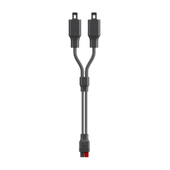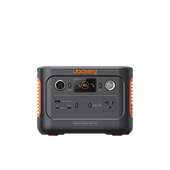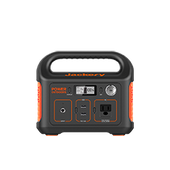The Ultimate Guide to Triathlon Checklist [PDF Packing List]
You will be preoccupied with preparing and traveling in the days leading up to a triathlon. Having a triathlon checklist is therefore highly recommended. It is simply a list of the items you must prepare before leaving your home and traveling to the race location. Examples include your wetsuit, travel documents, and energy beverages.

A dependable schedule can prevent a race from being ruined by forgetting essential items. Everyone's lists will differ significantly. The following list is loosely based on my own, but it could be better for you. It is also a helpful starting point for determining what to wear to a triathlon.
This detailed triathlon checklist includes information on general necessities, swimming or cycling equipment, running equipment, and more. We highly recommend Jackery portable power stations for your triathlon power requirements, as they provide ultra-fast charging before, during, and after your event. The Explorer 300, with its 293Wh capacity, is ideal for triathlon practice and post-race recovery.
|
 |
|
|
- 293Wh Capacity, 300W Inverter, 500W Surge - Quick AC charging in just 2.5 hours - Supports six smart devices at once - Excellent BMS protection - 36.4dB quiet power station |
How to Use Triathlon Checklist
Utilize this triathlon checklist to ensure that you have everything before you depart. The following are recommendations for maximizing the effectiveness of lists.
- Triathlon Packing List: How can you ensure you have everything you need on race day and confidently dominate your competition? By following this triathlon checklist, you can remain focused on racing well and appreciating the atmosphere on race day, knowing that you still need to remember everything.
- Checklist Instructions: Regardless of your experience level, you may need to pay attention to something (even with a list). Before leaving for your race, double-check that you've packed everything. Refrain from crossing items off the list simply because you discovered them in the pantry. Only mark them once they have been packaged. Otherwise, you may still abandon things.
- Printable Checklist PDF: Spend some time reviewing it, and then add or remove items as necessary to meet your needs. Near the bottom of the page is an editable Word document and a printable PDF version. Once you have compiled your version of the list, you can utilize it whenever you compete in a triathlon.
>>Download The Triathlon Checklist PDF
Triathlon Checklist: Must-Have Gear
A reasonable triathlon checklist will outline the necessary equipment for race day. In addition to the essentials, the ultimate triathlon checklist for novices also includes optional items that will give you the best chance of having a great race day experience.
After verifying the weather and getting excited to begin the trail, it is time to prepare. The only question is what triathlon equipment you should bring for safety and comfort.
Swimming Checklist
The location, duration, and temperature of a triathlon swim can all affect the equipment you should or are required to use. Fortunately, despite these factors, the needed equipment is minimal.
- Goggles: Bring two goggles in case one fails, preferably with tinted lenses that allow you to react to different light conditions.
- Swimsuit & Cap: Essential regardless of whether or not you are wearing a wetsuit. Stay prepared (or disqualified) during a transition.
- Wetsuit: Wetsuits are not always required or permitted.
- Lube: Choose a wetsuit-safe lubricant and apply it liberally to prevent abrasion and facilitate wetsuit removal.
- Towel: Many triathletes prefer to have a towel on hand to rinse off after the swim, mainly to dry their feet.
Certain swimming accessories, such as a wetsuit, earplugs, and noseplugs, are not always required. Some swimmers dislike wearing closures, and not all triathlons mandate wearing a wetsuit.
Ensure you have a swimsuit, a swim cap, and eyewear. Having a fresh pair of eyeglasses on race day can be advantageous, even though it may seem trivial. They will be free of scratches and scuffs and reduce sunlight more effectively if they are brand new. And pay attention to using some anti-fog goggle solution!
Cycling Checklist
The bike portion of a triathlon requires the most equipment and poses the most significant risk; you must pay attention to a crucial component, and your bike needs to function to finish the race.
The triathlon packing list includes items you may have yet to initially consider, such as your bike (even this can present challenges, such as neglecting your wheels).
- Bike: This may seem evident, but bikes have previously been overlooked. We advise giving it a brief, one-block test drive the night before to eliminate surprises.
- Bike Shoes: You can slide into your cycling footwear from there. Whether or not you wear socks while cycling depends on your personal preference, the length of the race, and the sort of bike shoes you own.
- Helmet: All USAT-sanctioned races mandate using a bicycle helmet during the ride.
- Water Bottle: Always have water available. You cannot predict how long you will have to wait for your heat to commence, so you must avoid becoming dehydrated.
- Bike Wrench: It is prudent to carry fundamental bicycle repair equipment. Again, this does not accompany you on the ride but is available for pre-race adjustments.
- Sunglasses: Even if it is not sunny, you should always wear sunglasses to protect your eyes from insects and debris.
- Bike Clothing: While wearing your race attire all day is often acceptable, many riders will want to bring a change of clothing.
The bike segment of the race will have the most comprehensive gear list because you will need apparel, hydration equipment, and bike tools in case of a broken chain or flat tire.
On race day, your bike, bike shoes, and helmet should be at the top of your list of things to remember. People need to pay more attention to their bikes on the day of a triathlon despite the existence of a pre-race checklist.
Running Checklist
Triathlon's most straightforward discipline is the run. However, even this requires equipment you may have yet to include on your triathlon packing list.
- Shoes & Socks: These are the most essential items for running. If there is time to limber up, bring a second pair and leave your race pair in transition.
- Elastic Laces: If you intend to use elastic laces, ensure they are already fitted; secure your shoes before race day.
- Running Clothing: Consider wearing long pants, a jacket, or a jersey if you encounter inclement weather.
- Hat or Visor: Protecting your face and neck from the sun is a good idea, even if the weather is perfect.
The run is the concluding leg of a triathlon. At this juncture, you will be exhausted, and perspiring, which is one of the reasons why packing a few wet wipes in your transition bag can be helpful. Before sprinting to the finish line, you can wash your face and armpits.

Triathlon Checklist: General Gear
Some items must fit neatly into the swim, bike, or run categories but pertain to the triathlon checklist. Again, some things are all to your quest, while others are desirable.
Nutrition Checklist
Once your equipment is prepared, refrain from scrimping on nutrition and hydration items. If you intend to use particular sports beverages, energy bars, or energy gels or blocks, you must have previously consumed them. Ideally, you will have evaluated all of the foods and drinks you plan to finish during the race during training to ensure that they do not upset your stomach.
- Water Bottles: You must carry a source of hydration; if you prefer your water chilled, an insulated container is the best option.
- Energy Bars or Gels: Prepared beverages, foods, and gels for before, during, and after the race, as appropriate. On race day, it is recommended not to refrain from attempting anything new.
- Fuel Belt: A hydration belt is essential when you need to remain light while carrying essentials and water or hydration liquid.
- Food: You should prepare for consumption before or after the race.
Always have water available, which is not feasible during your swim, so pre- and post-swim hydration may be necessary. Then, always carry a means of hydration while cycling and running. You can bring snacks or gels to consume during the race with a pouch on your bike and a running belt. Finally, always ensure you have sustenance and water at your transition locations.
Power Gear Checklist
A portable power station is required before or after the triathlon, as you do not want your electronic devices' batteries to die at inopportune times, such as when your sports watch cannot record your data and other instances.
The portability of a power station or power cell is a significant advantage. They are lightweight and portable, making them ideal for sports or travel.
- Jackery Explorer 300 Portable Power Station: With 293Wh capacity and can power triathlon electrical devices such as sports watches, track pumps, etc.
- Jackery Explorer 500 Portable Power Station: Perfect for long-term triathlon with 518Wh capacity to power most of your electronics.
Jackery is a well-known manufacturer of superior solar equipment, including solar panels, power stations, and solar generators. The Jackery portable power stations are equipped with intelligent BMS and sophisticated temperature sensors, raising the bar for safety. They are efficient and silent even at 14 degrees Fahrenheit (-10 degrees Celsius).

Jackery portable power stations are an exceptional power source for your activities, whether living off-grid, camping, sports, or needing a backup power supply. The ergonomic handle design makes it simple to transport the bag wherever you wish to travel. Jackery provides portable power solutions ranging from 160W to 3000W and can power up to 99% of devices.
The Jackery Explorer 300 portable power station has a 293Wh capacity and can power triathlon electrical devices such as sports watches, track pumps, etc. The enhanced multipurpose outputs include two pure sine wave AC outlets, a 60W type C PD connector, and a QC 3.0 port, allowing you to power up to six intelligent devices simultaneously.
Using SolarSaga 100W solar panels, the Jackery Explorer 300 Portable power station can be charged in 3.5 hours (0-80%). Combine the electrical outlet and the USB-C PD port for faster charging. Wall outlets and car outlets are two additional alternatives for charging.
|
Series |
Capacity |
Ports |
Recharge Time |
Triathlon Electronics |
|
Jackery Explorer 300 |
293Wh |
1*60W PD USB-C 1* QC3.0 USB-A 1*Carport 2*AC Output |
1*SolarSaga 100W: 5H |
Light(5W): 46.9H GPS(50W): 4.7H Phone(29W): 8.1H Sports Watch(60W): 3.9H Headphone(5W): 46.9H |
|
Wall Charging: 4.5H |
||||
|
Car Charging: 5H |
The Jackery Explorer 500 portable power station charges low- to high-power devices for extended periods. With a high battery capacity of 518Wh, an ergonomic design, a foldable handle, and industry-leading BMS technology, the power station is ideal for long-term triathlons, outdoor adventurers, and emergency home backup solutions. Weighting approximately 13.32 pounds, it is exceptionally transportable.

The most extended battery life is the finest feature of the Jackery Explorer 500 Power Station. Even after 800 charge cycles, the battery capacity of the power station will remain at 80%. In addition to its robust, lightweight, and portable design, the power station comes with a 3-year and 1-year extended warranty.
|
Series |
Capacity |
Ports |
Recharge Time |
Triathlon Electronics |
|
Jackery Explorer 500 |
518Wh |
3*USB Outputs 1*AC Output 1*12V Carport 2*DC Output 1*DC Input |
1*SolarSaga 100W: 9.5H |
Light(5W): 82.9H GPS(50W): 8.3H Phone(29W): 14.3H Sports Watch(60W): 6.9H Headphone(5W): 82.9H |
|
Wall Charging: 7.5H |
||||
|
Car Charging: 7.5H |
Day Race Checklist
The morning of the race should be as simple as feasible.
First, it is highly recommended that you lay out and inspect all of your triathlon equipment the night before the race, as opposed to the morning of the event.
It would help if you strived to give yourself sufficient time to have breakfast, prepare and pack your vehicle, travel to the event, and prepare for the race start in the most relaxed manner.
- ID or Membership: Verify your race's ID or membership requirements. Typically, a photo ID is the bare minimum.
- Race Pack: Print the race pack, including race numbers, if applicable.
- Transition Bag: Bag for transporting and storing your equipment in transition. During the chaos of a race, it can be all too simple to lose gear.
- Suncream: Regardless of the weather, it is worthwhile to embrace the protection.
- Electrical Tape: Electrical Tape is always beneficial, for instance, when taping items on a bicycle.
- Toilet Roll: Toilets frequently need more supplies.
- Phone: Stay in touch with your friends and family in an emergency.
The triathlon race-day list is not as straightforward as "include this" and "do not include that" because it can be distinct for each competitor. How committed are you to the sport? Do you seek completion or victory? What are the conditions, and does that affect what you must bring?
Triathlon Checklist FAQs
The following shows the frequently asked questions about the triathlon checklist:
- What size of power station do I need for my triathlon?
Triathlon, hiking, fishing, and other sports require a portable power source to a much greater extent. It has a greater chance of being forgotten but allows you to charge your triathlon gear and is a secondary power source for outdoor activities.
Jackery portable power stations are ideal for triathlons due to their durability, portability, and safety, as they can charge your phone, GPS, and other devices.
Determine the required amperage for your triathlon before choosing the appropriate size power station. You can select from Jackery power stations with capacities varying from 3024Wh to 240Wh based on your needs. Here is how to determine how long it will take to charge your triathlon equipment:
Working time = power station capacity*0.85 / your device's operating wattage
For instance, charging a 5W headlamp with a Jackery Explorer 300 (293Wh capacity) will take 50 hours (293Wh*0.85/5

- What to consider when packing the triathlon gear?
Triathlon packing involves prepping equipment for three distinct disciplines. Therefore, having a system for staying organized on race day can make packing and race morning significantly less stressful.
Figuring out what you want and need in your race pack requires trial and error and will vary based on conditions such as the weather. Don't be afraid to try new things; add and remove items as appropriate, and reorganize yourself.
- Make A Checklist: As with most things in life, packing is made more accessible by planning prior. If you are a triathlete traveling for the first time, consider creating a packing list a few weeks before your journey.
- Base on Luggage Limits: Next, select the items to bundle that are more challenging than you believe. The ideal triathlon suitcase has multiple compartments/pockets/sections so that equipment can be readily separated.
- Prepare Your Gear: Replace your triathlon bike's deteriorated tires and tubes. If it is unsightly, replace it. Ensure you have everything necessary to repair a flat tire on your bicycle. Check the laces of your running shoes and replace them with elastic slip-on secure laces if you regularly compete in them.
- Don’t Pack CO2: CO2 cartridges are prohibited in your checked cargo. Be sure to remove them before traveling. Leaving them in your luggage can result in additional screening, delays, and even the possibility that your luggage will miss your flight! Remember that you can purchase CO2 at a local store or the race expo.
Final Thoughts
There is much to track on race day, and a triathlon checklist can make the logistics more manageable. The requirements you have will vary from race to race. You can leave your wetsuit at home if your race consists of a pool rather than an open-water swim.
If competing in an Ironman, you may replace the tri-suit with distinct gear for each discipline. Nevertheless, this triathlon checklist is suitable for most athletes and races, and there is space for you to put any additional items you need to bring. In addition, a Jackery portable power station could help charge your triathlon electronics at any time.
Disclaimer:
The runtime mentioned for appliances powered by Jackery is for reference only. Actual runtime may vary under different conditions. Please refer to real-world performance for accurate results.










































































































Leave a comment